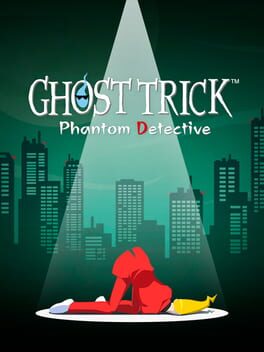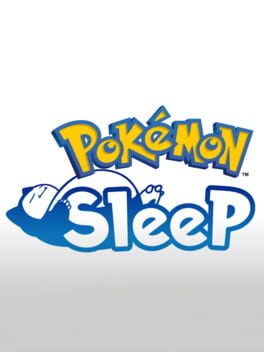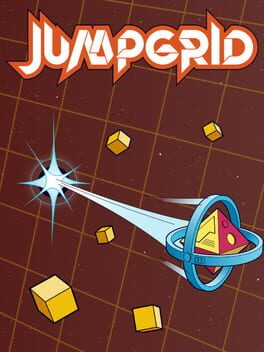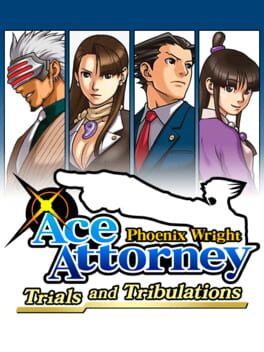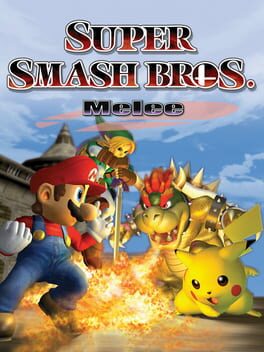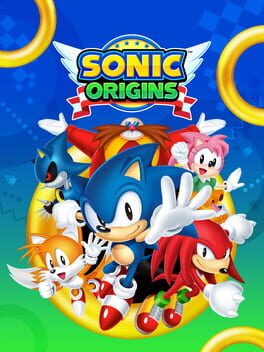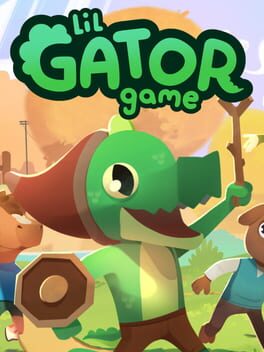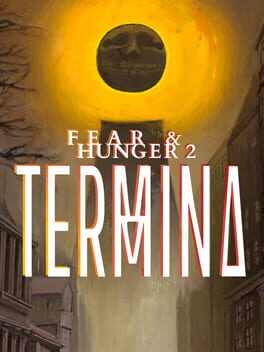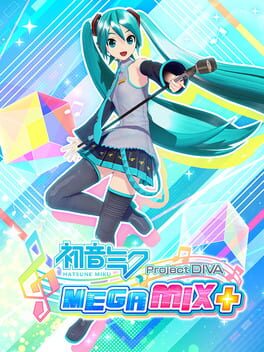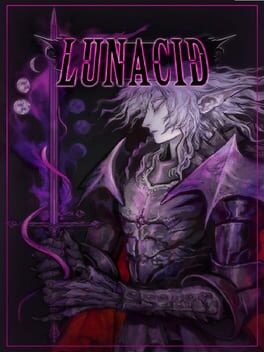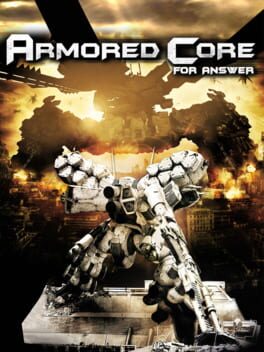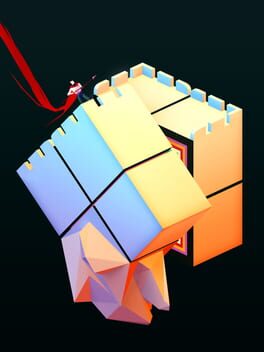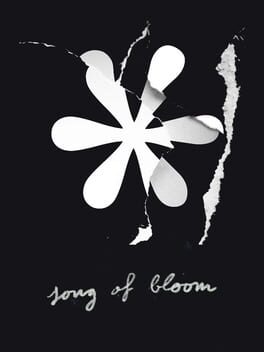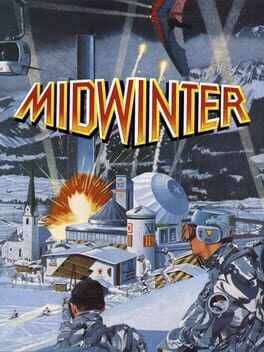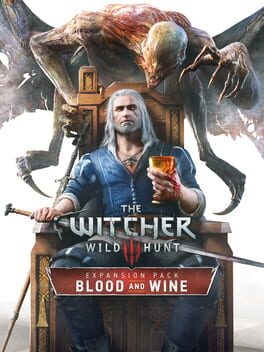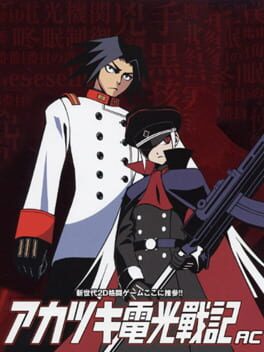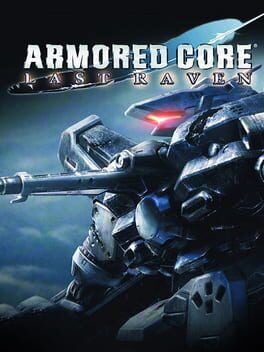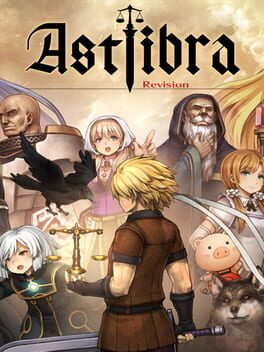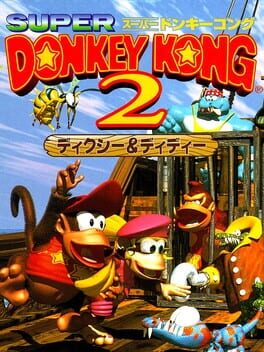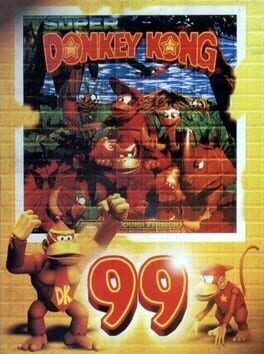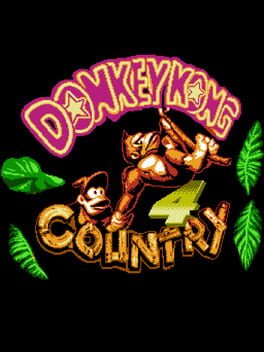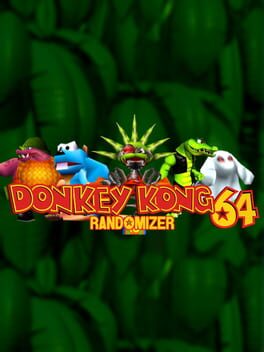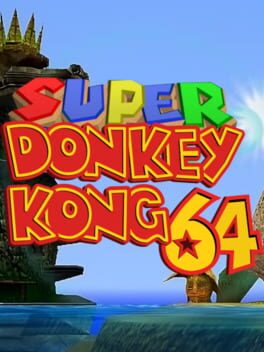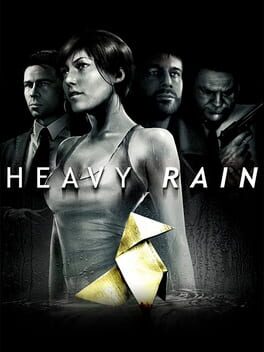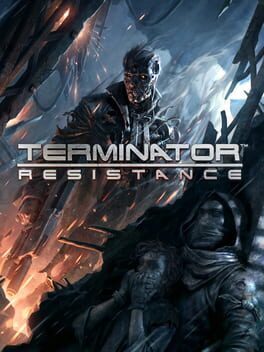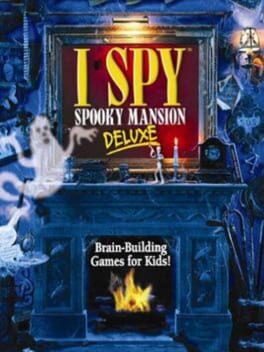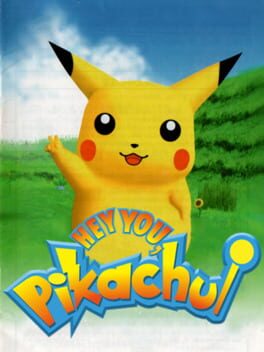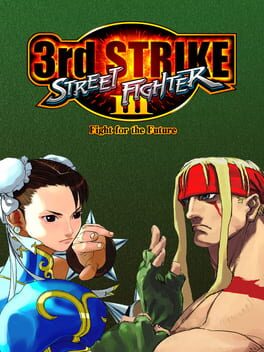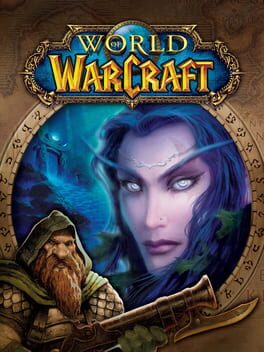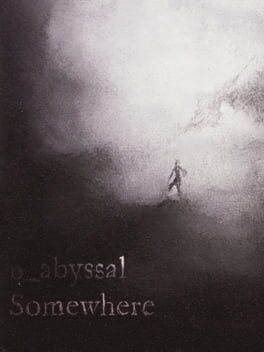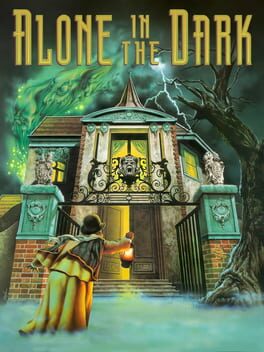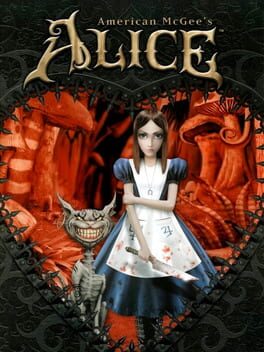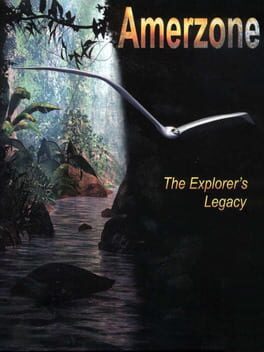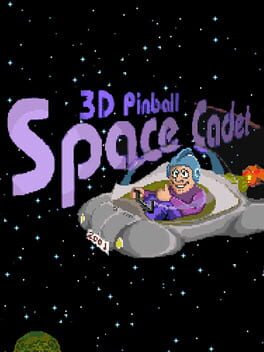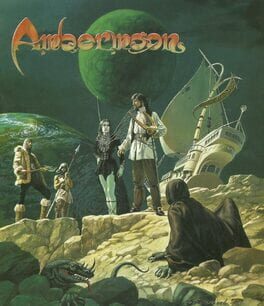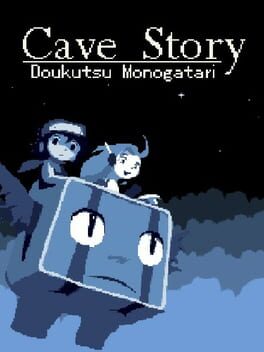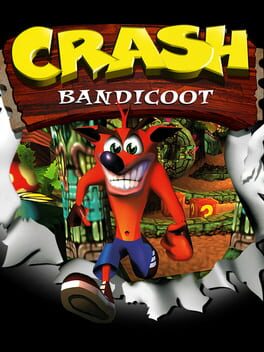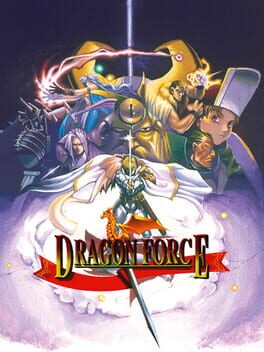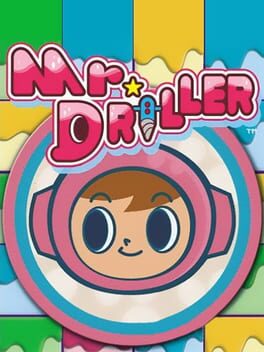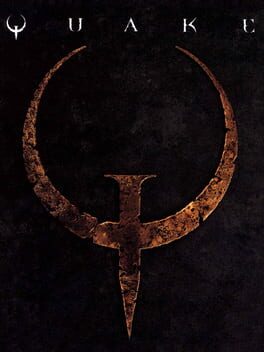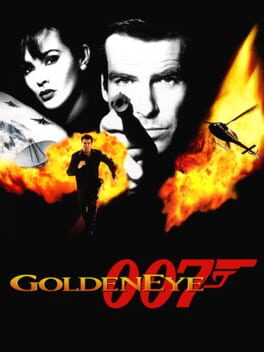chickenwings
15 reviews liked by chickenwings
In his video last year regarding context sensitivity, Matthewmatosis opens by describing Ghost Trick as entirely context-sensitive: the main action button ("trick") always performs a different action depending on the item possessed. However, he points this out as an exception to the trend of heavy context-sensitivity weighing down modern titles, because simply put, Ghost Trick uses context-sensitivity not as a crutch, but as its core. It never seems to suffer from fuzzy context: the game not only gives you plenty of safe time to experiment with set-pieces leading up to timed sequences (since untimed traversal to the victim is every bit a puzzle in itself), but also briefly describes the single "trick" of each object possessed to give players an idea of how to progress. Furthermore, Ghost Trick's difficulty hits a perfect sweet-spot: it doesn't feel free because traversal and manipulating objects to your advantage require a good degree of planning and experimentation, but failure also never feels too punishing because other characters and the environment are great at providing thoughtful feedback upon failure, so the player isn't just banging their head against a wall via quick restarts at built-in checkpoints.
Essentially, it's like playing the ancestor of Return of the Obra Dinn but with a time loop mechanic attached. The objective remains simple (travel back to four minutes before death to avert fate), but how to achieve said objective is always completely dictated by your surroundings. As a result, it naturally iterates upon its basic structure to create more unconventional scenarios: soon you're not just manipulating objects for traversal and foiling assassins, you're also solving locked room mysteries, or traveling to different environments to save victims from elsewhere, or diving into deaths within deaths to avert multiple fates at a time. Through all of this, Ghost Trick understands one of the key strengths of video games: creating virtual playgrounds of experimentation unsaddled by the limitations of time to reward players through the joy of discovery. The player is constantly surprised time and time again not only from unexpected object interactions, but also from how the narrative weaves in and out of death sequences to create suspenseful moments. It's a minor miracle in itself that the story never jumps the shark: the gameplay mechanics remain firmly consistent alongside its lore, and every plot thread is neatly wrapped up by the end of the game after a series of subtly foreshadowed twists. Combine this marrying of storytelling and gameplay with expressive animations, a colorful and very personable cast, an understated yet powerful soundtrack, and a great mix of humor and emotional moments, and you get what is perhaps the most cohesive title in the DS library.
It's rather poetic that a game which looked simple on the outside provided such an intricate exercise for Shu Takumi to prove that he was no one-trick pony. I'm grateful that Ghost Trick has finally been ported to modern systems for a whole new audience to lose their minds over this, for it's a masterpiece that everyone owes to themselves to check out. At the end of the day, nothing feels quite as cathartic as miraculously changing destiny in the face of inevitable death.
Essentially, it's like playing the ancestor of Return of the Obra Dinn but with a time loop mechanic attached. The objective remains simple (travel back to four minutes before death to avert fate), but how to achieve said objective is always completely dictated by your surroundings. As a result, it naturally iterates upon its basic structure to create more unconventional scenarios: soon you're not just manipulating objects for traversal and foiling assassins, you're also solving locked room mysteries, or traveling to different environments to save victims from elsewhere, or diving into deaths within deaths to avert multiple fates at a time. Through all of this, Ghost Trick understands one of the key strengths of video games: creating virtual playgrounds of experimentation unsaddled by the limitations of time to reward players through the joy of discovery. The player is constantly surprised time and time again not only from unexpected object interactions, but also from how the narrative weaves in and out of death sequences to create suspenseful moments. It's a minor miracle in itself that the story never jumps the shark: the gameplay mechanics remain firmly consistent alongside its lore, and every plot thread is neatly wrapped up by the end of the game after a series of subtly foreshadowed twists. Combine this marrying of storytelling and gameplay with expressive animations, a colorful and very personable cast, an understated yet powerful soundtrack, and a great mix of humor and emotional moments, and you get what is perhaps the most cohesive title in the DS library.
It's rather poetic that a game which looked simple on the outside provided such an intricate exercise for Shu Takumi to prove that he was no one-trick pony. I'm grateful that Ghost Trick has finally been ported to modern systems for a whole new audience to lose their minds over this, for it's a masterpiece that everyone owes to themselves to check out. At the end of the day, nothing feels quite as cathartic as miraculously changing destiny in the face of inevitable death.
Pokémon Sleep
2023
Bedroom fire hazard skinner box with no perceivable benefits to your sleep routine, borderline data scraping tool. One of the worst projects Nintendo has put out in years, honestly. Imagine the inept out-of-touch gimmicks of their Wii U era shenanigans mixed with their morally-depraved Switch era anti-consumerism.
Fortnite
2017
Pikmin
2001
This past week I made a trip to hang out with some friends an hour down the road, and something we do almost every time I come over is plug in the modded Wii and fuck around with whatever iso catches our eye. This two day event was no different: Monday night I banged out the last third of Resident Evil 4, and the next morning; huddled around the TV looking for something to pass the time with, I tried Pikmin on a whim. My memory card was full from last night’s adventure so I could only get a taste of the adventure at the risk of losing a massive amount of work, but even from the 3 day sample we tried, I could tell it was something special. Everything about it was attractive to me, from the Nintendo-spun RTS mechanics to the peculiar world they inhabited. I knew when I got home from that trip that I had to sit down and really sink my teeth into the game.
Funny enough, Pikmin has actually been a bit of a white whale for me personally. As a kid playing Luigi’s Mansion for the first time, unearthing the Pikmin trailer felt like peering into something beyond our world. It always looked like something I’d be into, but fate was not kind to my interests, and I never got my hands on a copy. Though maybe in retrospect I should have actually asked for the game once or twice… Regardless, I finally sat down to play it as an adult, and predictably it was absolutely wonderful. What I didn’t expect was that I’d go on to play through the game 3 times to completion within the week. Looking into it online it seems like the length of the game, and by extension the 30 day time limit, seem to be the biggest point of contention amongst most players. This is peculiar to me, as in my experience I found it to be the glue that prevented the game’s systems from completely collapsing in on themselves. That’s not a sleight against the mechanics though, and I do want to shine a light on the actual game part because I feel like it gets overlooked when looking at the game from the outside.
Every layer is razor sharp, and the few massive pieces of design interlock so well to allow for interesting strategy puzzles, that removing or adding just a single piece would likely send the whole thing crashing down. Across a single day there are only a few major things to keep track of: The Pikmin population, part locations, level layouts, and enemy spawns. It’s all disgustingly simple on paper, but contending with everything at once is where the magic really happens. Efficiency is the name of the game here, and because tasks have to be performed in real time by the Pikmin (with slight time saves coming from the number of Pikmin on a task and the status of their bud), a strong grasp of level navigation is all but essential to prevent massive time and population losses. Some weeks I’d play simple and juggle basic tasks to nab a part or two a day, whereas other times I’d find myself playing more towards chipping away at level hazards one day, and then cleaning up with 3 or 4 parts in a single stretch the next. It’s a testament to the complexity and density of the admittedly small levels that even after multiple reasonably efficient runs, I still couldn’t even begin to chart out anything resembling an optimal path to get parts as quickly as possible.
So how about the timer? Well, it's maybe not a direct threat in the way the developers intended. On a first playthrough you have more than enough time to collect all 30 ship parts and get the best ending (on my first playthrough with minimal resets I managed to beat the final boss on day 27, and collect the final part on day 28) and you’ll likely continue to shave off time with every subsequent run, so on paper it may seem like it the timer may as well not be there at all, right? I’m not convinced.
The reason I find the time limit to be such a captivating piece of the puzzle is not because it’s a particularly challenging thing to work around on its own, but for how it shifts your perspective on every mechanic and every choice you make over the course of a run. If you took this exact campaign and all it’s challenges, but lifted the 30 day timer, the way you’d approach each level would completely flip on its head. Multitasking would be unnecessary as you could execute a plan as slowly and carefully as possible, you would have all the time in the world to plant the maximum amount of Pikmin for any one scenario, and the punishment for mistakes shifts from added tension and short-term changes of plans, to simply robbing you of more of your time. In layman's terms, removing the timer would probably miss the point.
It’s been said that people tend to optimize the fun out of something if given the opportunity. In the case of Pikmin, this has completely different insinuations depending on the existence of a timer, and that’s what makes it such a fascinating inclusion to me. No matter how well you understand the game, no matter how sharp your execution is, it doesn’t matter. The timer is always looming overhead like an albatross subtly weighing on your psyche and steering your every move. Some may view it as something that just restricts player freedom, but with how loose the balance of the game and the timer admittedly are, it somehow perfectly balances itself as an element of the game that always subconsciously keeps the player in check. Few titles before or since have promoted optimisation in the face of a looming failure state so well, and this coming from a Nintendo game of all things could very well steer younger audiences to explore more games of this niche, and I just sorta love that prospect honestly.
This type of psychological tension is something I wish would be explored in more inherently childish games like this, and not just reserved for “mature” games. I sorta understand why this hasn’t been a common design principle - especially for a modern children’s game - but I love that the Big N was willing to put something like this together with their own flourish and have it come out so perfectly realized despite being such a bizarre mismatch of aesthetical and mechanical sensibilities. It would be easy to call it just a tech demo given its compact size (and it’s literal roots in GameCube tech demos) but that would be a mistake. The original Pikmin still stands as one of Nintendo’s boldest games to date, and I think it deserves to be viewed in the same glamorous light as every other masterpiece released on the purple lunchbox at the time. We need to do our best to cherish this game now, because I think the time of its potential influence and popularity has already begun to fade.
Funny enough, Pikmin has actually been a bit of a white whale for me personally. As a kid playing Luigi’s Mansion for the first time, unearthing the Pikmin trailer felt like peering into something beyond our world. It always looked like something I’d be into, but fate was not kind to my interests, and I never got my hands on a copy. Though maybe in retrospect I should have actually asked for the game once or twice… Regardless, I finally sat down to play it as an adult, and predictably it was absolutely wonderful. What I didn’t expect was that I’d go on to play through the game 3 times to completion within the week. Looking into it online it seems like the length of the game, and by extension the 30 day time limit, seem to be the biggest point of contention amongst most players. This is peculiar to me, as in my experience I found it to be the glue that prevented the game’s systems from completely collapsing in on themselves. That’s not a sleight against the mechanics though, and I do want to shine a light on the actual game part because I feel like it gets overlooked when looking at the game from the outside.
Every layer is razor sharp, and the few massive pieces of design interlock so well to allow for interesting strategy puzzles, that removing or adding just a single piece would likely send the whole thing crashing down. Across a single day there are only a few major things to keep track of: The Pikmin population, part locations, level layouts, and enemy spawns. It’s all disgustingly simple on paper, but contending with everything at once is where the magic really happens. Efficiency is the name of the game here, and because tasks have to be performed in real time by the Pikmin (with slight time saves coming from the number of Pikmin on a task and the status of their bud), a strong grasp of level navigation is all but essential to prevent massive time and population losses. Some weeks I’d play simple and juggle basic tasks to nab a part or two a day, whereas other times I’d find myself playing more towards chipping away at level hazards one day, and then cleaning up with 3 or 4 parts in a single stretch the next. It’s a testament to the complexity and density of the admittedly small levels that even after multiple reasonably efficient runs, I still couldn’t even begin to chart out anything resembling an optimal path to get parts as quickly as possible.
So how about the timer? Well, it's maybe not a direct threat in the way the developers intended. On a first playthrough you have more than enough time to collect all 30 ship parts and get the best ending (on my first playthrough with minimal resets I managed to beat the final boss on day 27, and collect the final part on day 28) and you’ll likely continue to shave off time with every subsequent run, so on paper it may seem like it the timer may as well not be there at all, right? I’m not convinced.
The reason I find the time limit to be such a captivating piece of the puzzle is not because it’s a particularly challenging thing to work around on its own, but for how it shifts your perspective on every mechanic and every choice you make over the course of a run. If you took this exact campaign and all it’s challenges, but lifted the 30 day timer, the way you’d approach each level would completely flip on its head. Multitasking would be unnecessary as you could execute a plan as slowly and carefully as possible, you would have all the time in the world to plant the maximum amount of Pikmin for any one scenario, and the punishment for mistakes shifts from added tension and short-term changes of plans, to simply robbing you of more of your time. In layman's terms, removing the timer would probably miss the point.
It’s been said that people tend to optimize the fun out of something if given the opportunity. In the case of Pikmin, this has completely different insinuations depending on the existence of a timer, and that’s what makes it such a fascinating inclusion to me. No matter how well you understand the game, no matter how sharp your execution is, it doesn’t matter. The timer is always looming overhead like an albatross subtly weighing on your psyche and steering your every move. Some may view it as something that just restricts player freedom, but with how loose the balance of the game and the timer admittedly are, it somehow perfectly balances itself as an element of the game that always subconsciously keeps the player in check. Few titles before or since have promoted optimisation in the face of a looming failure state so well, and this coming from a Nintendo game of all things could very well steer younger audiences to explore more games of this niche, and I just sorta love that prospect honestly.
This type of psychological tension is something I wish would be explored in more inherently childish games like this, and not just reserved for “mature” games. I sorta understand why this hasn’t been a common design principle - especially for a modern children’s game - but I love that the Big N was willing to put something like this together with their own flourish and have it come out so perfectly realized despite being such a bizarre mismatch of aesthetical and mechanical sensibilities. It would be easy to call it just a tech demo given its compact size (and it’s literal roots in GameCube tech demos) but that would be a mistake. The original Pikmin still stands as one of Nintendo’s boldest games to date, and I think it deserves to be viewed in the same glamorous light as every other masterpiece released on the purple lunchbox at the time. We need to do our best to cherish this game now, because I think the time of its potential influence and popularity has already begun to fade.
Rhythm Heaven
2008
While going through Warioware: Touched! last year, I had my fair share of criticisms, mainly that the game felt somewhat trivial since every microgame was some form of poke + drag (or in the case of the mic games, just yelling til I won). On a surface level, it would appear that the other major Nintendo minigame collection series, Rhythm Heaven, falls into the same trap, since every game appears to be tap and flick, but I don't find that to be true. Quite the opposite in fact, as Rhythm Heaven DS is extremely challenging, yet super satisfying and fair.
Rhythm Heaven succeeds where I think Warioware: Touched! falls flat, because the former is much more subtle about mixing up devices to introduce an organic difficulty curve than the latter. Every minigame's gimmick is conveyed via some combination of call & response, memorizing rhythmic motifs, and recognizing appropriate audio & visual cues. This difficulty then gets ramped up, both within minigames and throughout the game's progression, by introducing new or different elements that alter how the mechanics are presented and utilized in some fashion, but ultimately retaining the core fundamentals. For instance, you might have to play "in the dark" for certain sections of minigames and rely heavily upon audio cues, or have to deal with sudden (yet firmly telegraphed) tempo shifts with tougher rhythmic variations, or even shift the backing melody or player actions to the off-beat to keep the player honest and in-tune with the minigame's workings. This, combined with the simple yet realized controls of tap, hold, and flick (lending itself naturally to syncopation from tap/hold + flick alongside quick note playing from tapping) allows for a much more robust toolkit and strengthened intricate designs for a broadly diversified minigame ecosystem. Even if all these different rhythm games revolve around the same theme (i.e. finding the natural flow and beat in simple and often mundane tasks), they all manage to stand out from one another despite seemingly simple controls because the rhythms at which they are executed from one another can be so drastically varied and iterated upon.
The attention to detail is especially evident within the remix microgames at the end of each five game minigame chain. These finales add a fresh coat of paint to the previous four microgames (and once you get past the initial 30, sometimes even more than just four) and putting players' execution and knowledge banks to the test while ferrying them between the different concepts with ease. There's an overlying melody to the whole affair, just played with a different filter for each specific minigame type, and moreover, they're linked in a way where the players can recognize the carried-over beat and be in specific positions where they're ready to quickly adapt to the new control scheme. For instance, consider Remix 8: the ping-pong into vegetable slice looks intimidating at first, but once you realize that swiping the paddle in the former has the exact same rhythm as swiping to slice vegetables in the latter, then it's merely a case of recognizing the visual/audio disguise and maintaining your composure. Another example that comes to mind is within Remix 10, where there's a section transitioning from the snowboarding minigame to the choir kids' Glee Club. Normally, you'd think that there would be some issues immediately flashing into Glee Club, since you can't possibly know what's coming up without prior experience and not holding your stylus on the screen will result in your Choir Kid automatically singing as per the control scheme of hold and release to play notes. However, this is accounted for with the lead-in snowboard minigame, because the last few frames of that section telegraph a jump, which requires the player to hold down the stylus on the screen and then flick and release. Since the jump hasn't occurred yet, the player should still be holding down, and this transitions naturally into the Glee Club's neutral state, where they can then release the stylus to the telegraphed beat and proceed onwards. It's little moments like these that make all the different jumps between previous minigames feel seamless, and transform the remixes into challenging, yet extremely fulfilling victory laps.
My only outstanding complaint is that certain minigames require considerably more accuracy and precision to master than others, and are often far more finicky about their timing requirements without obvious visual/audible feedback regarding slight misses, which can make repeated plays for that Superb/Perfect ranking a bit obnoxious. Glee Club and Moai Doo-Wop 2 are two of the more infamous culprits, to where some users have even created strategy guides. I can certainly relate, as it took me over 8 tries on Glee Club to snag a superb before I realized that the tight timing during the quick notes in the middle of the track was the section that was stumping me, since being off by just a hair there doesn't result in the other Choir Kids giving you the stink-eye. As a related aside, I did have a bit of difficulty with Rockers 2, since this minigame introduces the use of the L/R button as a whammy bar and feels a bit out of place, being the only minigame that doesn't exclusively use the touchscreen and forcing me to bend my left hand around to access the button. That said, I'll choose to chalk that one up to a skill issue since the unlockable Technical Guitar Course afterwards gives you plenty more opportunities to get used to this mechanic. Regardless, I find Rhythm Heaven to be a very honest and approachable set of minigames despite the level of mastery often required, and I can easily see myself coming back to this one to spend more time honing my skills. It's a complete and realized package that's truly the epitome of doing a lot with very little, and I eagerly look forward to testing my mettle with the remaining games in the series.
Rhythm Heaven succeeds where I think Warioware: Touched! falls flat, because the former is much more subtle about mixing up devices to introduce an organic difficulty curve than the latter. Every minigame's gimmick is conveyed via some combination of call & response, memorizing rhythmic motifs, and recognizing appropriate audio & visual cues. This difficulty then gets ramped up, both within minigames and throughout the game's progression, by introducing new or different elements that alter how the mechanics are presented and utilized in some fashion, but ultimately retaining the core fundamentals. For instance, you might have to play "in the dark" for certain sections of minigames and rely heavily upon audio cues, or have to deal with sudden (yet firmly telegraphed) tempo shifts with tougher rhythmic variations, or even shift the backing melody or player actions to the off-beat to keep the player honest and in-tune with the minigame's workings. This, combined with the simple yet realized controls of tap, hold, and flick (lending itself naturally to syncopation from tap/hold + flick alongside quick note playing from tapping) allows for a much more robust toolkit and strengthened intricate designs for a broadly diversified minigame ecosystem. Even if all these different rhythm games revolve around the same theme (i.e. finding the natural flow and beat in simple and often mundane tasks), they all manage to stand out from one another despite seemingly simple controls because the rhythms at which they are executed from one another can be so drastically varied and iterated upon.
The attention to detail is especially evident within the remix microgames at the end of each five game minigame chain. These finales add a fresh coat of paint to the previous four microgames (and once you get past the initial 30, sometimes even more than just four) and putting players' execution and knowledge banks to the test while ferrying them between the different concepts with ease. There's an overlying melody to the whole affair, just played with a different filter for each specific minigame type, and moreover, they're linked in a way where the players can recognize the carried-over beat and be in specific positions where they're ready to quickly adapt to the new control scheme. For instance, consider Remix 8: the ping-pong into vegetable slice looks intimidating at first, but once you realize that swiping the paddle in the former has the exact same rhythm as swiping to slice vegetables in the latter, then it's merely a case of recognizing the visual/audio disguise and maintaining your composure. Another example that comes to mind is within Remix 10, where there's a section transitioning from the snowboarding minigame to the choir kids' Glee Club. Normally, you'd think that there would be some issues immediately flashing into Glee Club, since you can't possibly know what's coming up without prior experience and not holding your stylus on the screen will result in your Choir Kid automatically singing as per the control scheme of hold and release to play notes. However, this is accounted for with the lead-in snowboard minigame, because the last few frames of that section telegraph a jump, which requires the player to hold down the stylus on the screen and then flick and release. Since the jump hasn't occurred yet, the player should still be holding down, and this transitions naturally into the Glee Club's neutral state, where they can then release the stylus to the telegraphed beat and proceed onwards. It's little moments like these that make all the different jumps between previous minigames feel seamless, and transform the remixes into challenging, yet extremely fulfilling victory laps.
My only outstanding complaint is that certain minigames require considerably more accuracy and precision to master than others, and are often far more finicky about their timing requirements without obvious visual/audible feedback regarding slight misses, which can make repeated plays for that Superb/Perfect ranking a bit obnoxious. Glee Club and Moai Doo-Wop 2 are two of the more infamous culprits, to where some users have even created strategy guides. I can certainly relate, as it took me over 8 tries on Glee Club to snag a superb before I realized that the tight timing during the quick notes in the middle of the track was the section that was stumping me, since being off by just a hair there doesn't result in the other Choir Kids giving you the stink-eye. As a related aside, I did have a bit of difficulty with Rockers 2, since this minigame introduces the use of the L/R button as a whammy bar and feels a bit out of place, being the only minigame that doesn't exclusively use the touchscreen and forcing me to bend my left hand around to access the button. That said, I'll choose to chalk that one up to a skill issue since the unlockable Technical Guitar Course afterwards gives you plenty more opportunities to get used to this mechanic. Regardless, I find Rhythm Heaven to be a very honest and approachable set of minigames despite the level of mastery often required, and I can easily see myself coming back to this one to spend more time honing my skills. It's a complete and realized package that's truly the epitome of doing a lot with very little, and I eagerly look forward to testing my mettle with the remaining games in the series.
Jumpgrid
2019
Holy shit, what an absolute joy of a game. This is perfectly up my alley, instantly snappy movement, simple controls but a lot of skill involved, single screen and arcade-like. The levels here are so creative throughout, it could have gotten away with so much less, or with reusing concepts more, but there are amazing level concepts that are used once in a level you can beat in 10 seconds and I love that. The pace of this was enthralling and kept me going through the whole thing in one sitting. The last world in particular was a blast, it does get tougher but it's not just a challenge of existing ideas, it breaks all of the rules and pushes the game to its limits. Damn, what an awesome surprise this was. Go play this right now.
we live in a society where power and structure are against us, always; if not with intent (though it often is), then by design, by circumstance, by unspoken nature.
to cope with this contradiction between personal and social justice, between objective truth and constructive outcomes, the ace attorney trilogy lays out a commonly found but powerfully stated thesis:
the most important thing we have is other people, and supporting each other through active love and active connection is sometimes all we have against hostile and generally unchangeable circumstances. the power of these connections won't always be able to do miracles. But if we don't lose sight of them, and we trust them, and they're reciprocated, though they can't get us out of hardships or injustices, they can get us through them.
The Truth isn't just Objectively What Happened here. The truth is our convictions, our notions, our willingness to embody our ideals, and our trust in our loved ones to do the right things and/or trust us in return.
it's a pivot towards the personal over AA1's relatively straightforward delivery of the world and 2's critiques of the systems that fail victims and protect even the smallest and most banal systems of power, which still bring ruin to the people under them. i think that pivot is a necessary rounding out and payoff to these ideas. the system isn't going to change, but we can't just abandon it, or more specifically we can't abandon each other to die in it.
so those are my Very Serious Thoughts About Themes but i also think this game just fucking slaps dude. the play isn't innovated at all over Justice For All but it IS further refined; this gameplay loop is so clean you could eat off of it. investigations finally condense themselves to reasonable lengths and uniformly follow sensical progression paths. the worst recurring characters are entirely absent here and the ones who do show up are all at their most likeable and well-integrated into the cases. the midgame filler case, bar one deeply offensive and (perhaps more importantly) annoying guy, is actually funny and fun. the game in general and especially the localization are at the height of their powers in terms of Serious Thematic Writing AND Comedy here, imo. godot is a great example of this; he's a bizarre guy even by the standards of this trilogy, with like three different quirks, any of which could easily define a lesser character, but all of which are funny and good. the first time he slammed his hand down on the table and a coffee mug slid into it from offscreen i was hooting and hollering. AND he's a character with a lot of depth who offers a direct thematic counterpoint not only to phoenix but to the prosecutors of past games as well. the music is at a series high too, a HUGELY NOTICEABLE improvement over JFA.
the game is firing on all cylinders and easily the best of the trilogy. this could have been it and i would have been happy, but there's a lot of this world that could just as easily be further elaborated on thematically, and what little i know of the second trilogy i'm excited that it seems like they're gonna go in interesting directions.
to cope with this contradiction between personal and social justice, between objective truth and constructive outcomes, the ace attorney trilogy lays out a commonly found but powerfully stated thesis:
the most important thing we have is other people, and supporting each other through active love and active connection is sometimes all we have against hostile and generally unchangeable circumstances. the power of these connections won't always be able to do miracles. But if we don't lose sight of them, and we trust them, and they're reciprocated, though they can't get us out of hardships or injustices, they can get us through them.
The Truth isn't just Objectively What Happened here. The truth is our convictions, our notions, our willingness to embody our ideals, and our trust in our loved ones to do the right things and/or trust us in return.
it's a pivot towards the personal over AA1's relatively straightforward delivery of the world and 2's critiques of the systems that fail victims and protect even the smallest and most banal systems of power, which still bring ruin to the people under them. i think that pivot is a necessary rounding out and payoff to these ideas. the system isn't going to change, but we can't just abandon it, or more specifically we can't abandon each other to die in it.
so those are my Very Serious Thoughts About Themes but i also think this game just fucking slaps dude. the play isn't innovated at all over Justice For All but it IS further refined; this gameplay loop is so clean you could eat off of it. investigations finally condense themselves to reasonable lengths and uniformly follow sensical progression paths. the worst recurring characters are entirely absent here and the ones who do show up are all at their most likeable and well-integrated into the cases. the midgame filler case, bar one deeply offensive and (perhaps more importantly) annoying guy, is actually funny and fun. the game in general and especially the localization are at the height of their powers in terms of Serious Thematic Writing AND Comedy here, imo. godot is a great example of this; he's a bizarre guy even by the standards of this trilogy, with like three different quirks, any of which could easily define a lesser character, but all of which are funny and good. the first time he slammed his hand down on the table and a coffee mug slid into it from offscreen i was hooting and hollering. AND he's a character with a lot of depth who offers a direct thematic counterpoint not only to phoenix but to the prosecutors of past games as well. the music is at a series high too, a HUGELY NOTICEABLE improvement over JFA.
the game is firing on all cylinders and easily the best of the trilogy. this could have been it and i would have been happy, but there's a lot of this world that could just as easily be further elaborated on thematically, and what little i know of the second trilogy i'm excited that it seems like they're gonna go in interesting directions.
Super Mario Sunshine
2002
to the best of my knowledge, character movement exists within giant state machines dictated by the player input and the properties of any current collision. if you touch a slope, transition to sliding state; if you press the jump button, transition to a jump state unless you're sliding or etc. etc.. in those behind-the-scenes tales of miyamoto meticulously testing mario's movement in low-poly sandboxes during sm64's development, these state transitions and their corresponding kinematics values were the real meat of the tweaks on the programmers' end. "let's make the flip jump transition available even before the turn animation begins, also if mario jumps onto a slope less steep than X degrees maybe we could try giving him a few frames standing or moving to give the player some time to jump again, also if you collide in the air with a slope steeper than X degrees make sure you don't add horizontal momentum when you transition to a slide" these are just ideas off the top of my head and don't represent the actual code, but this is how I conceive of it. the character is a tightly tuned system that functions as a simulacrum of real movement, realistic where our brain wants it and exaggerated where our hands desire it. code with the model ingrained into its logic teeters the line between pretty and messy, and sm64 perhaps got the closest in its era to actually getting somewhere with this system.
sunshine unfortunately lacks this level of polish. mario's main movement feels tighter and more responsive than in the game's predecessor, but at the same time the introduction of fludd and of dynamic object geometry strains whatever was in the previous character state table. accordingly mario feels at his most chaotic in this entry. floating into a slope could result in him suddenly sliding away with no ability for the player to break out of his helplessness, or a rotating platform could cause mario to stutter as the line between "flat" and "slope" becomes blurred. mario will legitimately phase through objects on the rare occasion he doesn't clip in and out or plummet out of the sky having lost his jump. this distinct lack of polish (likely due to the game's rushed development) pervades each aspect of the game.
second-to-second these movement quirks will likely be the most apparent issue to the player, but zooming out reveals level design and structure indicative of the game's troubled history. immediately out of the gate: no star (or rather "shine sprite") requirements, with the first seven shines of each main area now mandatory and the rest completely optional and pointless outside of bragging rights. the seventh shine of each is a brief shadow mario chase that varies little from location-to-location, leaving just the first six of each area as notable challenges. so how do these stack up?
many of these (at least one per world) are obnoxious "secret" stages that steal mario from the sunkissed vista of isle delfino and drop him into gussied-up debug rooms. the level design here mainly consists of a few half-hearted platforming challenges made from hastily-assembled generic blocks slapped together with a smattering of coins and 1UPs, and none of them are very fun. the rotating objects that mario must ride in a few of these especially aggravate that previously-mentioned unstable character state table, and mastering them requires a frustrating level of practice given how unnatural the physics of these sections are. of special note is the infamous chuckster level, which involves having mario awkwardly thrown from platform to platform over death pits with restricted influence from the player. talking to each chuckster at a slight offset will result in getting thrown at angles that will often result in certain demise, and learning how to best exploit them again requires more frustrating practice in a stage that should be otherwise brief. all of this is exacerbated by the fact that you have no access to fludd, leaving mario with solely the sideflip and the spin jump. these are good moves in their own right, but I can't help but miss a low-and-long movement option like the long jump, or potentially a high vertical option that doesn't require the control stick shenanigans the sideflip/spin jump necessitate.
removing all of the secret stages (of which there are ten) and all of the shadow mario (of which there are seven) yields just 32 unique shines as part of the main game. some more categories of stages quickly become apparent:
sunshine is often criticized for its number of red coin stages, and while the postgame adds one to each secret stage along with a couple other optional ones, the main game itself features just five. the windmill village and pirate ship ones are more traditional platforming challenges, and I'd say the windmill village one is a solid exploration of the titular area in bianco hills. the pirate ship one is frustrating given the difficulty of staying put on the actual pirate ships, but the majority of the red coins are on climbable grating and are much more straight-forward to obtain. the coral reef red coin challenge revolves around sunshine's spotty swimming mechanics (questionable for a game with such a focus on watery environments) and ultimately boils down to a game of I Spy with a fiddly camera. there is also one using the rideable bloopers in ricco harbor (I often failed this one after collecting all the coins by crashing into the pier with the shine on it, which surprisingly enough didn't kill me playing on the 3DAS version), and one that takes place with the underwater scuba controls within a large bottle, which I can't really say is particularly interesting given how few obstacles there are in your way.
boss stages appear frequently throughout each world to little surprise from players of sm64 prior. bianco hills features petey pirahna, whose mouth must be filled with water before he spits sludge at you. his first fight is pretty on-par for what I'd expect from a first boss fight, and his refight is pretty similar with a couple little additions, such as flying about the main area and creating tornados (?). gooper blooper appears no less than three times throughout the game and severely wears out his welcome by his noki bay appearance, although this is proceeded by a legitimate platforming challenge that makes up for it. of note is that his first two ricco harbor appearances are virtually identical except for that one fight requires one extra spin jump in order to reach the arena. wiggler, mecha-bowser (who you fight with rockets from a rollercoaster car), the manta, king boo, and eely-mouth all have singular fights throughout the other worlds that generally are the better shines of their respective worlds. they fall about on the level I would expect from a 3D platformer: not necessarily enthralling, but decent diversions from the actual platforming.
there are also three il piantissimo races akin to koopa the quick from sm64. I would say some of the latter's races are somewhat challenging, whereas the former's chosen routes leave a lot to be desired and thus can easily be thwarted by anyone with a reasonable understanding of the controls. they unfortunately feel like 30-second throwaway shines. there is also a time attack on the rideable bloopers with a couple minor obstacle that seem pulled right out of the secret stages.
all of the above shines removed from the total, we now have 13 shines left. in theory these are the "interesting" objectives, the ones that would hopefully pop up when reminiscing about what made this game special. when I look at this list, the first one that pops out to me is sand bird... the infamous filter for many new players, including myself when I first finished this game. this stage actually involves collecting red coins, although this objective is somewhat auxillary considering the first seven can be scooped up in less than 15 seconds and the final one can't be reached until the bird that you stand upon finally reaches the top of the tower in the middle of the area. rather, the main obstacle is simply that the bird rolls 90 degrees, releasing you into the ether if you don't scramble over onto the bird's side before it completely rotates. learning to correctly time mario's walk over the edge between the different faces of one of the bird's many cubes (I usually do it at the tail) is entirely unintuitive and unforgiving. once it clicks, the stage becomes an auto-scroller without any point or challenge, as it has the last couple times I've played it. there is no sweet spot in the middle where the shine feels obtainable with some effort; it either feels insurmountable when you're first trying it and then rote on each subsequent playthrough.
this describes a lot of these remaining shines unfortunately, especially when it comes to the proper platforming challenges in each stage. the caged shine sprite in ricco harbor atop a large structure of steel girders caused me to tear my hair out initially with the wind sprites that assault you, requiring a full tower reclimb; on this attempt I forgot the intended path and instead skipped about 60% of the area with a well-timed spin jump. the runaway ferris wheel stage in pinna park had the same result for me: on my original playthrough I struggled greatly with the electrified koopas and their unpredictable movement cycles, whereas on this playthrough I skipped past the entire top half of the climbable grating with another spin jump, making the challenge moot. simply knowing the movement tech completely obliterates the challenge, and yet I feel obligated to do it because without using it I'm thrust into the jank. the same goes for those who know how to use the spam spray: timed slime-clearing levels such as the one in sirena beach are incessently precise without knowing how to shotgun your water blasts, but once you do they become pointlessly easy. simply knowing discrete strategies or moves renders the game moot, and thus there is no linear difficulty curve. between my first playthrough and now there is simply a void where a fun game should be; never has sunshine felt like a accessible trial to be overcome. there is simply a gulf between aggravation and tedium.
this is to say nothing of the hub, the optional content, the one-of-a-kind environmental throughline, hell, even fludd itself. it just all feels... slight in its rushed nature and uneven scope. levels are expansive but exploration is heavily discouraged given how scripted many of the individual shines are, and on this playthrough I felt like I missed entire swaths of each level. new fludd abilities or yoshi aren't given bespoke unlock levels such as in sm64, and instead simply are dropped from even more shadow mario chases. the plaza hub does come to life more and more as the game continues, but compared to peach's castle it lacks progression even as it opens up new challenges (among which are the particularly infamous sunshine levels everyone discusses like pachinko or the lilypad death river). the one thing that keeps me going is that sense of locality that few other games of this era can point to, that feeling of seeing the ferris wheel far off in the background of another stage, or the hotel delfino off in the distance. no other game I can think of attempts something so drastically removed from typical delineation of themes between areas like sunshine, and it's a shame that it jettisons a lot of its potential by flooding the shine list with these dripless special stages in a floating void.
in many ways I don't see sunshine as truly mechanically paired with 64 as the "collectathon" mario games. in fact, I don't think 64 was even intended as a collectathon as we understand them today; instead its explorable areas feel more like opportunity seized from technical restraints preventing true linear platforming challenges from really succeeding. sunshine attempts to move more in the latter direction, without the same sense of non-linearity or potentiality that arose from 64's seeming vastness at the time. in this regard it feels more like an ancestor to galaxy; galaxy is hatched from the egg of sunshine, something with the same genes as 64 but woven within a new form and flesh. it may have even been genius in its own right had it not been hastily released in an attempt to bolster the gamecube's faltering performance. in another way it's the reverse of much of nintendo's modern "meh"-tier output: full of soul but completely unpolished.
sunshine unfortunately lacks this level of polish. mario's main movement feels tighter and more responsive than in the game's predecessor, but at the same time the introduction of fludd and of dynamic object geometry strains whatever was in the previous character state table. accordingly mario feels at his most chaotic in this entry. floating into a slope could result in him suddenly sliding away with no ability for the player to break out of his helplessness, or a rotating platform could cause mario to stutter as the line between "flat" and "slope" becomes blurred. mario will legitimately phase through objects on the rare occasion he doesn't clip in and out or plummet out of the sky having lost his jump. this distinct lack of polish (likely due to the game's rushed development) pervades each aspect of the game.
second-to-second these movement quirks will likely be the most apparent issue to the player, but zooming out reveals level design and structure indicative of the game's troubled history. immediately out of the gate: no star (or rather "shine sprite") requirements, with the first seven shines of each main area now mandatory and the rest completely optional and pointless outside of bragging rights. the seventh shine of each is a brief shadow mario chase that varies little from location-to-location, leaving just the first six of each area as notable challenges. so how do these stack up?
many of these (at least one per world) are obnoxious "secret" stages that steal mario from the sunkissed vista of isle delfino and drop him into gussied-up debug rooms. the level design here mainly consists of a few half-hearted platforming challenges made from hastily-assembled generic blocks slapped together with a smattering of coins and 1UPs, and none of them are very fun. the rotating objects that mario must ride in a few of these especially aggravate that previously-mentioned unstable character state table, and mastering them requires a frustrating level of practice given how unnatural the physics of these sections are. of special note is the infamous chuckster level, which involves having mario awkwardly thrown from platform to platform over death pits with restricted influence from the player. talking to each chuckster at a slight offset will result in getting thrown at angles that will often result in certain demise, and learning how to best exploit them again requires more frustrating practice in a stage that should be otherwise brief. all of this is exacerbated by the fact that you have no access to fludd, leaving mario with solely the sideflip and the spin jump. these are good moves in their own right, but I can't help but miss a low-and-long movement option like the long jump, or potentially a high vertical option that doesn't require the control stick shenanigans the sideflip/spin jump necessitate.
removing all of the secret stages (of which there are ten) and all of the shadow mario (of which there are seven) yields just 32 unique shines as part of the main game. some more categories of stages quickly become apparent:
sunshine is often criticized for its number of red coin stages, and while the postgame adds one to each secret stage along with a couple other optional ones, the main game itself features just five. the windmill village and pirate ship ones are more traditional platforming challenges, and I'd say the windmill village one is a solid exploration of the titular area in bianco hills. the pirate ship one is frustrating given the difficulty of staying put on the actual pirate ships, but the majority of the red coins are on climbable grating and are much more straight-forward to obtain. the coral reef red coin challenge revolves around sunshine's spotty swimming mechanics (questionable for a game with such a focus on watery environments) and ultimately boils down to a game of I Spy with a fiddly camera. there is also one using the rideable bloopers in ricco harbor (I often failed this one after collecting all the coins by crashing into the pier with the shine on it, which surprisingly enough didn't kill me playing on the 3DAS version), and one that takes place with the underwater scuba controls within a large bottle, which I can't really say is particularly interesting given how few obstacles there are in your way.
boss stages appear frequently throughout each world to little surprise from players of sm64 prior. bianco hills features petey pirahna, whose mouth must be filled with water before he spits sludge at you. his first fight is pretty on-par for what I'd expect from a first boss fight, and his refight is pretty similar with a couple little additions, such as flying about the main area and creating tornados (?). gooper blooper appears no less than three times throughout the game and severely wears out his welcome by his noki bay appearance, although this is proceeded by a legitimate platforming challenge that makes up for it. of note is that his first two ricco harbor appearances are virtually identical except for that one fight requires one extra spin jump in order to reach the arena. wiggler, mecha-bowser (who you fight with rockets from a rollercoaster car), the manta, king boo, and eely-mouth all have singular fights throughout the other worlds that generally are the better shines of their respective worlds. they fall about on the level I would expect from a 3D platformer: not necessarily enthralling, but decent diversions from the actual platforming.
there are also three il piantissimo races akin to koopa the quick from sm64. I would say some of the latter's races are somewhat challenging, whereas the former's chosen routes leave a lot to be desired and thus can easily be thwarted by anyone with a reasonable understanding of the controls. they unfortunately feel like 30-second throwaway shines. there is also a time attack on the rideable bloopers with a couple minor obstacle that seem pulled right out of the secret stages.
all of the above shines removed from the total, we now have 13 shines left. in theory these are the "interesting" objectives, the ones that would hopefully pop up when reminiscing about what made this game special. when I look at this list, the first one that pops out to me is sand bird... the infamous filter for many new players, including myself when I first finished this game. this stage actually involves collecting red coins, although this objective is somewhat auxillary considering the first seven can be scooped up in less than 15 seconds and the final one can't be reached until the bird that you stand upon finally reaches the top of the tower in the middle of the area. rather, the main obstacle is simply that the bird rolls 90 degrees, releasing you into the ether if you don't scramble over onto the bird's side before it completely rotates. learning to correctly time mario's walk over the edge between the different faces of one of the bird's many cubes (I usually do it at the tail) is entirely unintuitive and unforgiving. once it clicks, the stage becomes an auto-scroller without any point or challenge, as it has the last couple times I've played it. there is no sweet spot in the middle where the shine feels obtainable with some effort; it either feels insurmountable when you're first trying it and then rote on each subsequent playthrough.
this describes a lot of these remaining shines unfortunately, especially when it comes to the proper platforming challenges in each stage. the caged shine sprite in ricco harbor atop a large structure of steel girders caused me to tear my hair out initially with the wind sprites that assault you, requiring a full tower reclimb; on this attempt I forgot the intended path and instead skipped about 60% of the area with a well-timed spin jump. the runaway ferris wheel stage in pinna park had the same result for me: on my original playthrough I struggled greatly with the electrified koopas and their unpredictable movement cycles, whereas on this playthrough I skipped past the entire top half of the climbable grating with another spin jump, making the challenge moot. simply knowing the movement tech completely obliterates the challenge, and yet I feel obligated to do it because without using it I'm thrust into the jank. the same goes for those who know how to use the spam spray: timed slime-clearing levels such as the one in sirena beach are incessently precise without knowing how to shotgun your water blasts, but once you do they become pointlessly easy. simply knowing discrete strategies or moves renders the game moot, and thus there is no linear difficulty curve. between my first playthrough and now there is simply a void where a fun game should be; never has sunshine felt like a accessible trial to be overcome. there is simply a gulf between aggravation and tedium.
this is to say nothing of the hub, the optional content, the one-of-a-kind environmental throughline, hell, even fludd itself. it just all feels... slight in its rushed nature and uneven scope. levels are expansive but exploration is heavily discouraged given how scripted many of the individual shines are, and on this playthrough I felt like I missed entire swaths of each level. new fludd abilities or yoshi aren't given bespoke unlock levels such as in sm64, and instead simply are dropped from even more shadow mario chases. the plaza hub does come to life more and more as the game continues, but compared to peach's castle it lacks progression even as it opens up new challenges (among which are the particularly infamous sunshine levels everyone discusses like pachinko or the lilypad death river). the one thing that keeps me going is that sense of locality that few other games of this era can point to, that feeling of seeing the ferris wheel far off in the background of another stage, or the hotel delfino off in the distance. no other game I can think of attempts something so drastically removed from typical delineation of themes between areas like sunshine, and it's a shame that it jettisons a lot of its potential by flooding the shine list with these dripless special stages in a floating void.
in many ways I don't see sunshine as truly mechanically paired with 64 as the "collectathon" mario games. in fact, I don't think 64 was even intended as a collectathon as we understand them today; instead its explorable areas feel more like opportunity seized from technical restraints preventing true linear platforming challenges from really succeeding. sunshine attempts to move more in the latter direction, without the same sense of non-linearity or potentiality that arose from 64's seeming vastness at the time. in this regard it feels more like an ancestor to galaxy; galaxy is hatched from the egg of sunshine, something with the same genes as 64 but woven within a new form and flesh. it may have even been genius in its own right had it not been hastily released in an attempt to bolster the gamecube's faltering performance. in another way it's the reverse of much of nintendo's modern "meh"-tier output: full of soul but completely unpolished.
Sonic Origins
2022
impressively, all of sonic team's greatest minds have come together to fuck up remastering already great ports of 30 year old games
if you'd love to pay five dollars for expansive day one content such as... the characters moving in the menus, then this is the game for you. integer scaling? fuck you. everything is blurry, play at 320x224 for the authentic Sega Genesis experience. shitty DRM to protect these untouchable, pirate proof genesis games? check. do you like your games optimized, because we don't, god bless whatever rig you're using because it won't get past the title screen. high quality audio? nope, it sounds and loops like shit. also we couldn't get the sonic 3 songs back so here are awful rearrangements of the prototype tracks that sounded fine lmfaooooo. welcome to the museum featuring NEVER BEFORE seen content such as youtube.com sonic mania adventures part 2. it's a 2d platformer but sorry! you're not allowed to bind anything to arrow keys.
you get the idea. somehow, this isn't all of it. sucks because somewhere under the slew of baffling decisions and technical issues is a great collection, but I suppose sonic being run through a shit filter a few dozen times is par for the course now. better versions of these games exist already via Sonic 1 Forever, Sonic 2 Absolute, Sonic 3 AIR, and Sonic CD Restored, but if you want to play the last two legally, you're probably out of luck - because both sonic 3 and CD have been delisted.
at least the cutscenes are boss
if you'd love to pay five dollars for expansive day one content such as... the characters moving in the menus, then this is the game for you. integer scaling? fuck you. everything is blurry, play at 320x224 for the authentic Sega Genesis experience. shitty DRM to protect these untouchable, pirate proof genesis games? check. do you like your games optimized, because we don't, god bless whatever rig you're using because it won't get past the title screen. high quality audio? nope, it sounds and loops like shit. also we couldn't get the sonic 3 songs back so here are awful rearrangements of the prototype tracks that sounded fine lmfaooooo. welcome to the museum featuring NEVER BEFORE seen content such as youtube.com sonic mania adventures part 2. it's a 2d platformer but sorry! you're not allowed to bind anything to arrow keys.
you get the idea. somehow, this isn't all of it. sucks because somewhere under the slew of baffling decisions and technical issues is a great collection, but I suppose sonic being run through a shit filter a few dozen times is par for the course now. better versions of these games exist already via Sonic 1 Forever, Sonic 2 Absolute, Sonic 3 AIR, and Sonic CD Restored, but if you want to play the last two legally, you're probably out of luck - because both sonic 3 and CD have been delisted.
at least the cutscenes are boss
52 lists liked by chickenwings
by Dalaamclouds |
20 Games
by psychbomb |
247 Games
by skellygore |
28 Games
by psychbomb |
30 Games
by undertale |
37 Games
by MendelPalace |
199 Games
by Bojangles4th |
59 Games
by Pangburn |
45 Games
